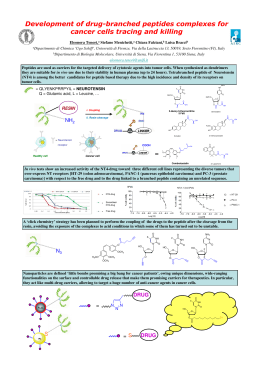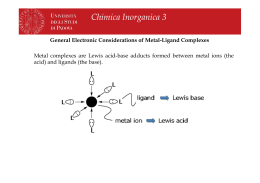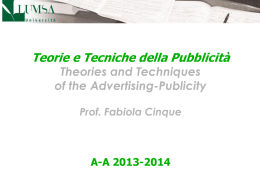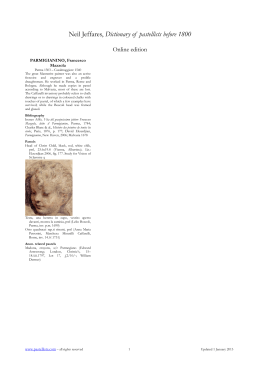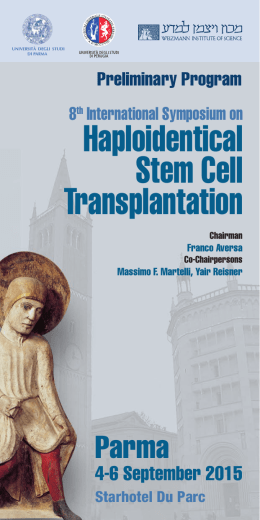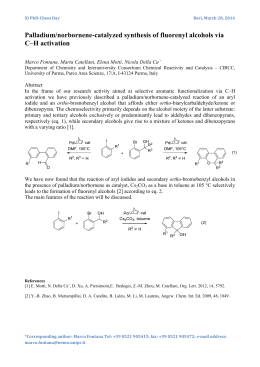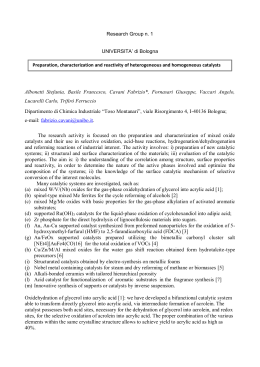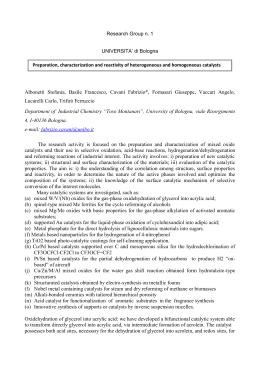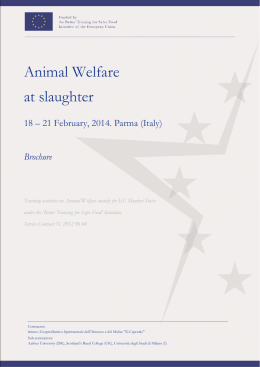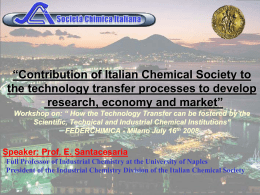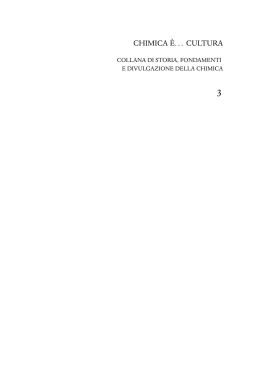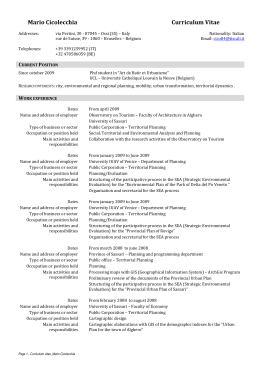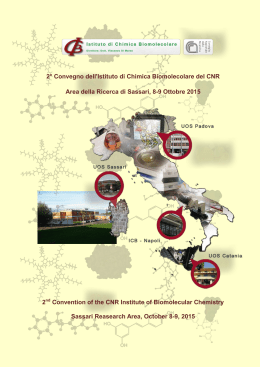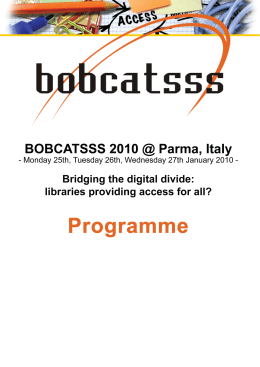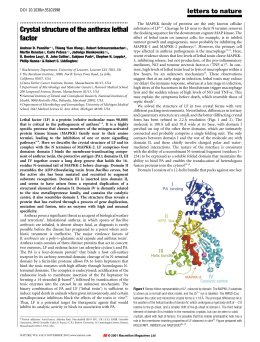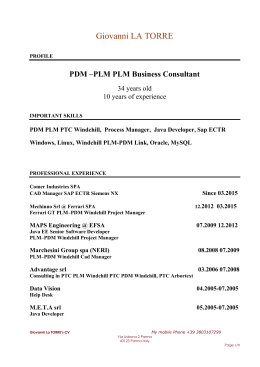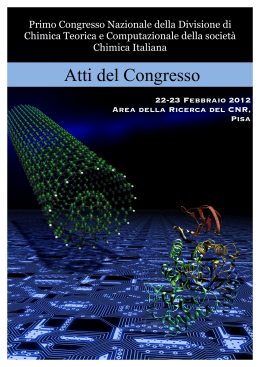UNIVERSITA DEGLI STUDI 01 PARMA Dipartimento di Chimica .fe, SOCIET A CHIMICA ITALlANA XLI Congresso N azionale della Divisione di Chimica Inorganica della Societa Chimica I taliana Atti del Congresso Parma, 3-6 Settembre 2013 Aula Magna dell' Ateneo P22 Protein P ARK9 and its interaction with divalent cations C. Solinas,a M.A. Zoroddu,a M. Peana,a S. Medici,a M. Remelli,b V.M. Nurchi C University of Sassari, Department of Chemistry and Pharmacy, Via Vienna 2, 1-07100 Sassari, Italy, e-mail: [email protected] b) University ofFerrara, Department of Chemical and Pharmaceutical Sciences, Via L. Borsari 16, 1-44100 F errara, Italy c) University of Cagliari, Department of Sciences and Geology, Citadella Universitaria, 1-09042 Monserrato (CA), Italy a) It is known that metals are able to play a role in the genesis and development of many neurodegenerative diseases. It was recently found that Park9 encoded protein can protect cells from manganese poisoning, an environmental risk factor for a Parkinson's disease-like syndrome [1 ,2]. Park9 belongs to a family of ATP-ases involved in metal coordination and transportation, and the familial mutations of this gene may result in early development of Parkins on Disease. We tested for Mn(II), Zn(II) and Cu(II) binding two peptide sequences from Park9, PID2E3~H5E6L7 (1) and FIC2G3D4GsA6N7D8C9GIO (2). These fragments are located from 1165 to 1171 and from 1184 to 1193 residues in Park9 sequence, and are highly conserved in a number of organisms, from yeasts to humans. We have carried out our experiments at different pH values and ligand/metal molar ratios with both potentiometric and spectroscopic (NMR, UV-vis) techniques, showing that the three metals are able to effectively bind the examined peptides. With peptide (1) Mn(II) and Zn(II) coordination involves the imidazole ring of Hiss and the carboxyl y-O of ASP2, Glu3 and Glu6 residues, in a distorted octahedral geometry, possibly involving bidentate interaction of carboxyl groups; four donor atoms participate in Zn(II) binding, resulting in a tetracoordinated geometry. With peptide (2) on the other hand Mn(H) and Zn(U) coordination involves the two cysteines; Mn(H) accepts additional ligand bonds from ASP4 and ASP8 to complete the coordination sphere, together with some water molecules [3,4]. Details of Cu(II) coordination are under study. [I] A.D. Oitler, A. Chesi, M.L. Oeddie, K.E. Stratheam, S. Hamamichi, K.J. Hill, K.A. Caldwell, O.A. Caldwell, A.A. Cooper, J.-C. Rochet, S. Lindquist, Na!. Gene!., 41 (2009) 308. [2] K. Schmidt, D.M. Wolfe, B. Stiller, D.A. Pearce, Biochem. Biophys. Res. Com., 383 (2009) 198. [3] M. RemeIli, M. Peana, S. Medici, L.O. Delogu, M.A. Zoroddu, Dalton Trans. , 42 (2013) 5964. [4] M.A. Zoroddu, M. Remelli , M. Peana, S. Medici., C. SoIinas, 12th Symposium on Metal Ions in Biology and Medicine, Proceeding, (2013), Eds. M. H. Torre and D. Gambino, Pag 170 -173 , ISBN: 978-9974-0-0911-0. 106
Scarica


